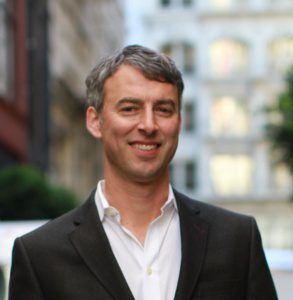Future Forward: Keep an Open Mind When Searching for Critical Infrastructure Solutions

Organization
At Columbia University’s Architecture and Urban Design Program, Sarté has been teaching “Resilience Infrastructure in Public Space,” exploring how to better shape cities of the future. Sherwood Design Engineers is headquartered in San Francisco, but it now has offices in New York, Houston, New Orleans and Atlanta. Sherwood Institute is a sister nonprofit based in San Francisco that’s involved in research and policy, helping to facilitate engagement with the United Nations.
“The Institute is a mission-based firm trying to make a positive impact,” notes Sarté. “To do that, the Institute will come in and pick up where a project leaves off to provide longer, more-lasting benefit.”
Ecological Engineering
“I think about [ecological engineering] in terms of how we bring the science from nature and ecological processes to solve technical engineering problems,” says Sarté. “For example, using the cleansing power of natural processes to break down pollutants in a water stream or a stormwater flow. That’s an important part of our practice, allowing natural systems to be woven into urban systems in a way that’s adding beauty, improving public space and providing measurable benefits.”
Firms or organizations rarely hire designers based on preconceived ecological desires—they’re looking for results—but Sarté considers nature-based concepts to be a useful piece of the toolkit that may benefit the design process in many ways, including financial. As an example, he mentions a specific project for Memorial Park in Houston, where intermittent periods of flooding and drought killed major areas of its forest.
“We looked at ways we could substitute pipes with bioswale and rain gardens and natural systems that could clean and treat the water,” adds Sarté. “We were able to demonstrate a significant financial benefit on a linear-foot replacement of pipe systems with natural, engineered systems.”
Water Issues and Aging Infrastructure
Sarté is publishing a new book, Innovations in Water Infrastructure, which groups key ideas into four main categories—technology, ecology, finance and equity—to help bring different tools from any of these “buckets” to address some of the critical risks currently faced by humanity. One such innovation looks at ways to create “micro-infrastructure centers” that give a neighborhood the ability to operate independently or complementary to larger infrastructure systems.
“Another innovation is this idea of bolt-on technologies,” he adds, “such as the turbines placed in gravity-fed pipes that bring drinking water from the Mount Hood watershed to Portland, which are actually generating power and electricity from the pressure flow in those pipes, without compromising the system.”
Another major risk, particularly in the United States, is aging and crumbling infrastructure. Sarté believes capital investment has been the largest hurdle, and new financial models that “decentralize” infrastructure may enable needed improvements with limited funding.
“San Francisco has set up a program to subsidize district-scale water-reuse systems that serve multiple properties, because they struggled to get the funding to build city-scale recycled water distributions,” he says. “It’s in the city’s best interest to support that water-demand reduction by collaborating with more-localized infrastructure providers.”
Think Globally
If there’s one bit of advice Sarté could pass along to students, designers and engineers, it would be to keep an open mind toward solving infrastructure problems. Other areas of the world—often developing areas that don’t have ingrained practices—can be the source of solutions to local problems where developers only “try what they know.”
“Some of the best ideas for thinking about our next century of urban development are coming from overseas, where rapid urbanization has occurred,” notes Sarté.
China has been experimenting with new concepts and development approaches, and areas of the world lacking enormous wealth have built more-nimble systems that may provide lessons to help everyone advance infrastructure with scarcer resources. Yet he also notes that there are many positive examples of innovation in United States that could benefit developing areas of the globe, such as how to protect large watersheds shared by multiple government entities.
“Engineering and the evolution of how we provide engineering services has really moved to a global conversation,” adds Sarté.
About Todd Danielson
Todd Danielson has been in trade technology media for more than 20 years, now the editorial director for V1 Media and all of its publications: Informed Infrastructure, Earth Imaging Journal, Sensors & Systems, Asian Surveying & Mapping, and the video news portal GeoSpatial Stream.


